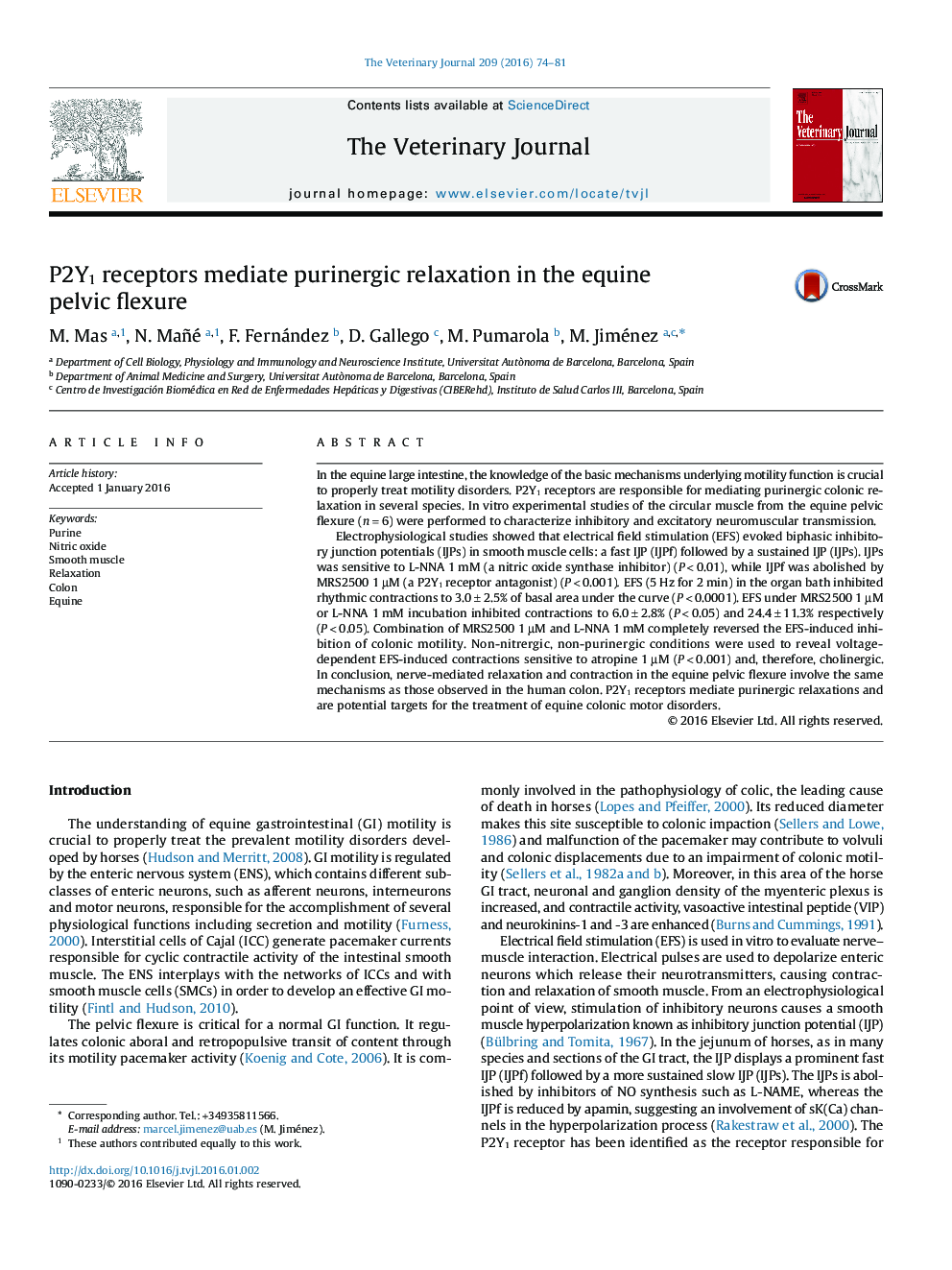| کد مقاله | کد نشریه | سال انتشار | مقاله انگلیسی | نسخه تمام متن |
|---|---|---|---|---|
| 5797325 | 1555234 | 2016 | 8 صفحه PDF | دانلود رایگان |

- Nitric oxide and a purine mediate relaxation in the horse intestine.
- P2Y1 receptors mediate relaxation in the equine pelvic flexure.
- Both inhibitory and excitatory pathways are similar in horses and humans.
- The purinergic pathway can be a pharmacological target for GI motility issues in horses.
In the equine large intestine, the knowledge of the basic mechanisms underlying motility function is crucial to properly treat motility disorders. P2Y1 receptors are responsible for mediating purinergic colonic relaxation in several species. In vitro experimental studies of the circular muscle from the equine pelvic flexure (nâ=â6) were performed to characterize inhibitory and excitatory neuromuscular transmission.Electrophysiological studies showed that electrical field stimulation (EFS) evoked biphasic inhibitory junction potentials (IJPs) in smooth muscle cells: a fast IJP (IJPf) followed by a sustained IJP (IJPs). IJPs was sensitive to L-NNA 1âmM (a nitric oxide synthase inhibitor) (Pâ<0.01), while IJPf was abolished by MRS2500 1âµM (a P2Y1 receptor antagonist) (Pâ<0.001). EFS (5âHz for 2âmin) in the organ bath inhibited rhythmic contractions to 3.0â±â2.5% of basal area under the curve (Pâ<0.0001). EFS under MRS2500 1âµM or L-NNA 1âmM incubation inhibited contractions to 6.0â±â2.8% (Pâ<0.05) and 24.4â±â11.3% respectively (Pâ<0.05). Combination of MRS2500 1âµM and L-NNA 1âmM completely reversed the EFS-induced inhibition of colonic motility. Non-nitrergic, non-purinergic conditions were used to reveal voltage-dependent EFS-induced contractions sensitive to atropine 1âµM (Pâ<0.001) and, therefore, cholinergic. In conclusion, nerve-mediated relaxation and contraction in the equine pelvic flexure involve the same mechanisms as those observed in the human colon. P2Y1 receptors mediate purinergic relaxations and are potential targets for the treatment of equine colonic motor disorders.
Journal: The Veterinary Journal - Volume 209, March 2016, Pages 74-81